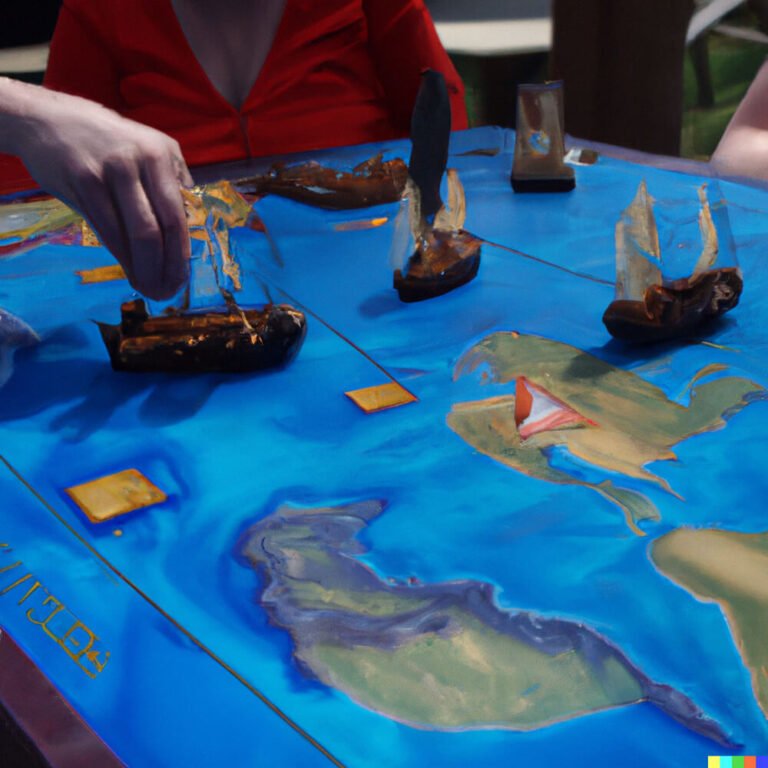Are you looking for the best strategy to dominate the Photosynthesis board game? Look no further. In this article, we will delve into the world of Photosynthesis and explore the most effective strategies to ensure victory.
From understanding the rules and objective of the game to analyzing gameplay mechanics and developing strategic approaches, we will cover all aspects of mastering this captivating board game. Whether you’re a beginner looking to improve your skills or a seasoned player aiming for an edge over your opponents, our comprehensive guide has got you covered.
The Photosynthesis board game has gained popularity for its unique gameplay and strategic depth. Players must carefully manage their resources and position their trees to harness the power of sunlight in order to thrive.
With a keen understanding of how to maximize your resources and strategic positioning, you can outmaneuver your opponents and emerge victorious. In this article, we will provide valuable insights into different player strategies, tips, and tricks for mastering the game, and review some of the best strategies for winning.
Through an exploration of various strategic approaches and an evaluation of their effectiveness, players can gain a competitive advantage in Photosynthesis. By understanding the importance of resource management, positioning, and sunlight points, you can develop a winning strategy that puts you ahead of the competition. Join us as we navigate through the intricacies of Photosynthesis board game strategy and uncover the key takeaways for dominating this exciting game.
Understanding the Rules and Objective of the Game
The Photosynthesis board game is a strategic and competitive game that challenges players to grow their trees in the best possible way to collect sunlight points. The objective of the game is to strategically place and grow trees in order to gather as much sunlight as possible throughout the four rounds of the game. At the end of the game, the player with the most sunlight points is declared the winner.
Understanding the rules of Photosynthesis is crucial in developing a winning strategy. Players must know how to strategically plant and grow their trees while blocking their opponents from doing the same. Each tree has different abilities, and players must use these abilities effectively to gain an advantage over their competitors.
A key aspect of understanding the rules and objective of Photosynthesis is realizing that resource management is vital for success. Knowing when to spend resources on planting new seeds, growing trees, or expanding your forest is crucial in maximizing sunlight points. By understanding these mechanics, players can develop more effective strategies for resource allocation and tree growth throughout the game. Mastering these strategies can lead to more successful gameplay and greater chances of winning against opponents.
In addition, understanding positioning on the board and maximizing sunlight points are essential elements in developing a successful strategy. Players should aim to position their trees strategically in order to maximize their exposure to sunlight.
This involves analyzing both immediate and long-term positioning options, as well as predicting opponents’ moves and obstructing their access to sunlight points. By paying close attention to these elements, players can develop a more efficient approach towards gaining sunlight points throughout each round of play.
Analyzing the Gameplay Mechanics
Understanding the Basic Mechanics
The gameplay mechanics of Photosynthesis board game revolve around the concept of planting and growing trees to collect sunlight points. Each player takes turns to strategically place their seeds, grow their trees, and ultimately harvest them for sunlight points. The game is played over a series of rounds, with each round representing a season in the life cycle of the trees.
Resource Management and Turn Order
One key aspect of the gameplay mechanics is resource management. Players must carefully manage their seeds and make strategic decisions on which trees to grow and when to harvest them for maximum benefit. Additionally, understanding the turn order is crucial as it can affect the positioning of your trees and your ability to collect sunlight points.
Positioning and Blocking
Another important gameplay mechanic is tree positioning. Trees that are closer to the center of the board receive more sunlight points, so strategic placement is key. Furthermore, players can use their tree positioning as a blocking strategy to prevent opponents from getting optimal sunlight points. Understanding these gameplay mechanics is vital in formulating an effective strategy for winning the game.
Analyzing the gameplay mechanics is essential in developing a winning strategy for Photosynthesis board game. Understanding resource management, turn order, and positioning can greatly impact your chances of success in this competitive game. By mastering these mechanics, players can develop efficient strategies that maximize their potential for victory.
Developing Strategic Approaches for Efficient Resource Management
Developing a strategic approach for efficient resource management in the Photosynthesis board game is crucial for achieving success. The game revolves around the concept of growing and cultivating trees to collect sunlight points, which are then converted into victory points. One of the key elements of efficient resource management is understanding the different phases of the game and utilizing resources effectively.
During the early stages of the game, prioritizing the acquisition of seeds and planting them strategically is essential. This allows players to establish a solid foundation for their tree growth, which will ultimately lead to an increased accumulation of sunlight points. Additionally, managing resources such as water and light effectively can also provide significant advantages in later stages of the game.
Another important aspect of resource management in Photosynthesis is optimizing tree growth. By carefully monitoring and planning the growth of trees, players can ensure maximum sunlight collection while minimizing resource wastage. This involves calculating the trajectory of sunlight points throughout different rounds and positioning trees accordingly.
Utilizing a combination of short-term and long-term resource management strategies can greatly influence a player’s success in Photosynthesis. Balancing immediate resource needs with future growth potential is key to maintaining a competitive edge throughout the game. This requires careful planning and adaptability in response to other players’ strategies, as well as an acute awareness of when to invest resources for long-term benefits.
| Photosynthesis Board Game Strategy | Resource Management Approach |
|---|---|
| Seed Acquisition | Prioritizing strategic planting |
| Tree Growth Optimization | Positioning based on sunlight trajectory |
| Short-term vs Long-term Planning | Balance immediate needs with future potential |
Evaluating the Importance of Positioning and Sunlight Points
When playing the Photosynthesis board game, one of the most critical aspects to consider is the positioning of your trees and maximizing sunlight points. The strategic placement of your trees on the board can significantly impact your ability to gather sunlight and ultimately win the game.
Understanding Positioning
Positioning your trees in advantageous locations on the board is crucial for maximizing sunlight points. It’s essential to consider how the shadows cast by other trees will affect your own trees’ access to sunlight. By strategically placing your trees in areas that will receive consistent sunlight throughout the game, you can ensure a steady accumulation of resources.
Maximizing Sunlight Points
Sunlight points are key to success in Photosynthesis. Without enough sunlight points, players will struggle to grow their trees and earn valuable victory points. Therefore, it’s essential to prioritize gathering as many sunlight points as possible each round. This may involve carefully positioning your trees in such a way that they are continually exposed to direct sunlight, allowing them to collect maximum energy.
Playing Defensively With Positioning
Another important aspect of positioning is playing defensively by limiting opponents’ access to sunlight. With strategic positioning, players can obstruct their opponents’ tree growth potential, forcing them into less advantageous areas of the board. This tactic can also help limit opponents’ ability to gather valuable resources and give players a competitive edge.
By understanding and prioritizing the importance of positioning and maximizing sunlight points in Photosynthesis, players can develop effective strategies for dominating the game and increasing their chances of winning. With careful planning and thoughtful placement of their trees, players can gain a significant advantage over their opponents and position themselves for success in this engaging board game.
Exploring Different Player Strategies and Their Effectiveness
When playing the Photosynthesis board game, it is crucial to understand that there are different player strategies that can be employed to achieve victory. One of the most common strategic approaches is to focus on expanding your forest as quickly as possible in the early stages of the game.
This allows you to accumulate more sunlight points, which are essential for scoring and ultimately winning the game. By prioritizing tree growth, players can also block their opponents from accessing crucial spaces on the board, thus limiting their ability to gather resources.
Another effective player strategy in the Photosynthesis board game involves strategically placing your trees in such a way that they can effectively block your opponents while maximizing your own access to sunlight points. This tactical approach requires careful planning and positioning of your trees at key locations on the board. By doing so, you can not only hinder your opponents’ progress but also ensure that you have a clear path to securing valuable resources for future turns.
In addition, some players opt for a more balanced strategy that combines elements of both aggressive expansion and strategic positioning. This versatile approach allows players to adapt to different circumstances throughout the game while maintaining competitive pressure on their opponents. By carefully assessing the state of the board and adjusting their tactics accordingly, these players strive to maintain a dynamic and resilient gameplay style that can lead them to victory.
| Player Strategy | Effectiveness |
|---|---|
| Aggressive Expansion | High – especially in early game stages |
| Strategic Positioning | Medium-High – effective for resource management and obstructing opponents |
| Balanced Approach | High – offers adaptability and resilience |
By understanding these different player strategies, participants can determine which approach best suits their gaming style while maximizing their chances of success in mastering Photosynthesis board game strategy.
Tips and Tricks for Mastering Photosynthesis Board Game Strategy
When it comes to mastering the strategy for the Photosynthesis board game, there are several tips and tricks that can help players gain an advantage over their opponents. One of the most important aspects of the game is efficient resource management.
Players must carefully consider which trees to plant and when, in order to maximize their sunlight points and ultimately win the game. One effective strategy for resource management is to focus on planting smaller trees early in the game, as this allows players to accumulate more sunlight points over time.
In addition to resource management, positioning is another crucial element of the game. It is important for players to strategically place their trees on the board in order to obstruct their opponents’ access to sunlight. This not only prevents other players from gaining sunlight points, but also opens up opportunities for the player to receive more sunlight themselves.
Another key strategy for mastering Photosynthesis board game is to prioritize certain actions based on their effectiveness. For example, focusing on upgrading trees or capturing valuable spaces on the board can greatly impact a player’s chances of winning. By carefully analyzing each gameplay mechanic and understanding how they contribute to overall success in the game, players can develop a well-rounded strategy that puts them ahead of the competition.
Comparing and Reviewing the Best Strategies for Winning the Game
When it comes to winning the Photosynthesis board game, having a solid strategy is essential. There are various approaches that players can take to increase their chances of winning the game. Let’s take a look at some of the best strategies and compare their effectiveness.
1. Maximizing Sunlight Points: One effective strategy is to focus on maximizing sunlight points throughout the game. This means strategically placing your trees in positions where they can collect the most sunlight and earn you the most points. By prioritizing sunlight points, you can quickly advance through the different phases of the game and gain an advantage over your opponents.
2. Blocking Opponents: Another successful strategy involves blocking your opponents from accessing certain areas of the board. By strategically placing your trees to block their access to sunlight or resources, you can hinder their progress while advancing your own position. This not only disrupts their plans but also helps you secure better positions for future turns.
3. Efficient Resource Management: A sound strategy for winning the game is efficient resource management. Instead of focusing solely on obtaining as many trees as possible, prioritize upgrading your existing trees and utilizing them effectively. This will help you conserve resources and make the most out of each turn, giving you a competitive edge over other players.
By carefully analyzing these different strategies, players can determine which approach aligns best with their playstyle and game objectives. It’s important to remember that adapting your strategy based on changing gameplay dynamics and opponent moves is crucial for success in Photosynthesis board game.
Conclusion
In conclusion, mastering the best strategy for the Photosynthesis board game involves a deep understanding of the game’s rules and objectives, as well as strategic approaches for efficient resource management. Throughout this article, we have explored the various gameplay mechanics and discussed the importance of positioning and sunlight points. Different player strategies have also been analyzed to determine their effectiveness in winning the game.
One of the key takeaways for dominating Photosynthesis board game strategy is the critical factor of resource management. Players must carefully plan their actions to efficiently collect and manage resources while strategically positioning their trees to maximize sunlight points. Additionally, understanding the unique benefits and limitations of each player strategy can provide valuable insights into developing an effective approach to the game.
As players continue to refine their skills in Photosynthesis, it is important to remember that there is no one-size-fits-all strategy for winning. Each game presents its own unique challenges, requiring adaptability and quick thinking from players. By incorporating the tips and tricks provided in this article and experimenting with different strategies, players can work towards developing their own winning formula for dominating Photosynthesis board game strategy.
Frequently Asked Questions
How Do You Win the Game Photosynthesis?
In the game Photosynthesis, players aim to grow and expand their own forest of trees in order to collect sunlight points. The key to winning is strategically planting and growing trees in locations that will maximize sunlight points over the course of the game.
Is Photosynthesis Worth It?
Whether Photosynthesis is worth it depends on individual preferences. The game offers strategic gameplay and beautiful artwork, but it may not be for everyone. If you enjoy games that require planning and tactical thinking, then Photosynthesis may be worth a try.
Is Photosynthesis a Good Two Player Game?
Photosynthesis can be a good two-player game for those who enjoy competitive strategy games. With just two players, the competition for sunlight points becomes more intense, and each move carries more weight. It can provide an engaging and challenging experience for two players looking to test their strategy skills against each other.

I love playing all kinds of games – from classics like Monopoly to modern favourites like Ticket to Ride.
I created this blog as a way to share my love of board games with others, and provide information on the latest releases and news in the industry.





